-
 bitcoin
bitcoin $122025.899241 USD
-2.12% -
 ethereum
ethereum $4488.068729 USD
-4.11% -
 bnb
bnb $1315.348019 USD
8.65% -
 tether
tether $1.000457 USD
0.03% -
 xrp
xrp $2.875326 USD
-3.69% -
 solana
solana $222.043604 USD
-4.07% -
 usd-coin
usd-coin $0.999682 USD
0.00% -
 dogecoin
dogecoin $0.249887 USD
-5.62% -
 tron
tron $0.337379 USD
-2.59% -
 cardano
cardano $0.827763 USD
-5.06% -
 hyperliquid
hyperliquid $45.774531 USD
-2.43% -
 chainlink
chainlink $22.079309 USD
-5.87% -
 ethena-usde
ethena-usde $1.000156 USD
0.02% -
 sui
sui $3.482566 USD
-3.57% -
 stellar
stellar $0.386982 USD
-4.92%
Is the Ethereum ETF affected by Ethereum network upgrades?
Ethereum ETFs track Ether’s price and are influenced by network upgrades, which boost investor confidence, scalability, and regulatory clarity, indirectly enhancing ETF appeal and performance.
Sep 23, 2025 at 05:36 am
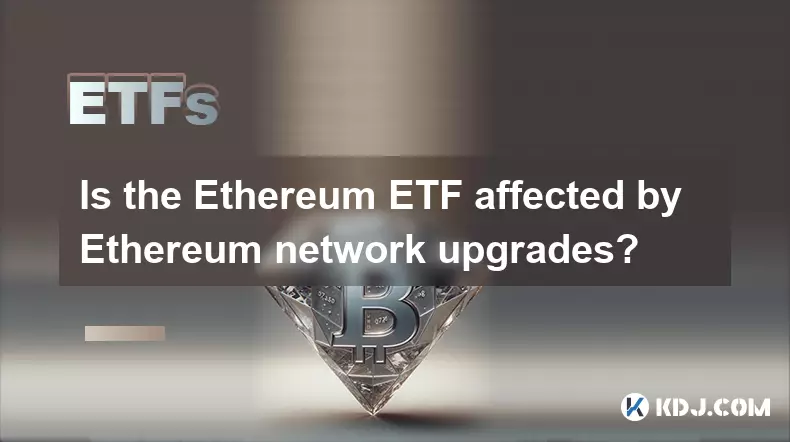
Ethereum ETF and Network Upgrades: Understanding the Link
1. The Ethereum ETF operates as a financial product designed to mirror the price movements of Ether, the native cryptocurrency of the Ethereum blockchain. It does not directly participate in network operations or consensus mechanisms. However, its market valuation is influenced by investor sentiment, regulatory clarity, and technological developments within the Ethereum ecosystem.
2. When Ethereum undergoes major network upgrades—such as the shift from proof-of-work to proof-of-stake during 'The Merge'—the fundamental characteristics of the asset evolve. These changes often lead to increased confidence among institutional investors, who view enhanced scalability, reduced energy consumption, and improved security as positive signals.
3. Market perception plays a crucial role in how ETFs respond to such upgrades. A successful upgrade can trigger bullish momentum, driving up the price of Ether. As ETFs track the underlying asset’s spot price, their net asset value adjusts accordingly, attracting more capital inflows from traders seeking exposure without holding actual crypto.
4. Regulatory bodies closely observe network transformations. For example, the classification of Ether as a commodity rather than a security has been partly justified by its decentralized, staking-based consensus model post-Merge. This distinction supports the approval and continued operation of Ethereum-based ETFs in regulated markets like the United States.
5. While the ETF itself remains structurally independent of the blockchain's codebase, any disruption during an upgrade—such as network downtime or consensus failure—could erode trust. Such events may cause short-term volatility, impacting ETF pricing and liquidity, especially if they raise concerns about the reliability of the underlying asset.
Impact of Scalability Improvements on Investment Products
1. Ethereum’s ongoing efforts to enhance scalability through rollups and protocol-level optimizations indirectly benefit ETF performance. Faster transaction finality and lower fees increase the utility of the network, reinforcing its position as a foundational layer for decentralized applications.
2. Institutional investors evaluating Ethereum ETFs consider ecosystem health alongside technical metrics. A robust, frequently upgraded network signals active development and long-term viability, factors that contribute to sustained demand for both the token and its derivative financial instruments.
3. Upgrades like EIP-4844 (Proto-Danksharding) reduce data costs for layer-2 solutions, fostering broader adoption. This expanded use case strengthens the economic moat around Ethereum, making it a more attractive benchmark for passive investment vehicles such as ETFs.
4. As the network becomes more efficient, speculative interest often rises. Traders anticipate future growth, pushing up Ether prices ahead of full implementation. ETFs capture this anticipatory movement, reflecting sentiment shifts even before tangible benefits materialize on-chain.
5. Persistent innovation also mitigates competitive threats from alternative smart contract platforms. By maintaining technological leadership, Ethereum preserves its dominance in total value locked and developer activity, which underpins investor confidence in associated financial products.
Staking Dynamics and ETF Valuation
1. Post-Merge, staking has become a core component of Ethereum’s security model. Although ETFs do not engage in staking directly, the yield generated by staked ETH influences overall supply dynamics and opportunity cost calculations for holders.
2. As more Ether is locked into staking contracts, circulating supply tightens. This scarcity effect can drive price appreciation, which in turn increases the net asset value of Ethereum ETFs. Investors may favor these products over self-custody options due to ease of access and integration with traditional brokerage platforms.
3. Some ETF structures incorporate staking rewards indirectly through total return swaps or other derivatives. In such cases, the fund’s performance more closely aligns with staked positions, effectively passing on a portion of the yield to shareholders despite not holding validator keys.
4. Market participants monitor staking ratios and withdrawal patterns as indicators of long-term commitment. Sudden unstaking waves could signal bearish outlooks, potentially pressuring ETF valuations. Conversely, steady accumulation in staking pools reinforces a narrative of confidence and stability.
5. Regulatory scrutiny over staking services does not extend to ETFs themselves, but frameworks governing custodial responsibilities and disclosure requirements may evolve in response to changing network conditions. Compliance teams must remain vigilant to ensure alignment with evolving standards, particularly when marketing funds tied to actively upgrading protocols.
Frequently Asked Questions
Can Ethereum ETFs participate in network governance?No, Ethereum ETFs are investment vehicles that track price performance. They do not hold voting rights or influence protocol decisions, including upgrade proposals or parameter adjustments.
Do network forks affect Ethereum ETF holdings?In the event of a contentious hard fork, ETF managers typically follow the dominant chain recognized by major exchanges and custodians. Alternate chains resulting from forks are generally not included in fund assets unless formally adopted by the index provider.
How do ETF issuers verify the authenticity of underlying Ether?Issuers rely on regulated custodians to hold physical Ether backing the shares. Regular audits, proof-of-reserves, and third-party attestations ensure transparency and confirm that the digital assets are securely held and accurately accounted for.
Disclaimer:info@kdj.com
The information provided is not trading advice. kdj.com does not assume any responsibility for any investments made based on the information provided in this article. Cryptocurrencies are highly volatile and it is highly recommended that you invest with caution after thorough research!
If you believe that the content used on this website infringes your copyright, please contact us immediately (info@kdj.com) and we will delete it promptly.
- BlockDAG, DOGE, HYPE Sponsorship: Crypto Trends Shaping 2025
- 2025-10-01 00:25:13
- Deutsche Börse and Circle: A StableCoin Adoption Powerhouse in Europe
- 2025-10-01 00:25:13
- BlockDAG's Presale Buzz: Is It the Crypto to Watch in October 2025?
- 2025-10-01 00:30:13
- Bitcoin, Crypto, and IQ: When Genius Meets Digital Gold?
- 2025-10-01 00:30:13
- Stablecoins, American Innovation, and Wallet Tokens: The Next Frontier
- 2025-10-01 00:35:12
- NBU, Coins, and Crypto in Ukraine: A New Yorker's Take
- 2025-10-01 00:45:14
Related knowledge
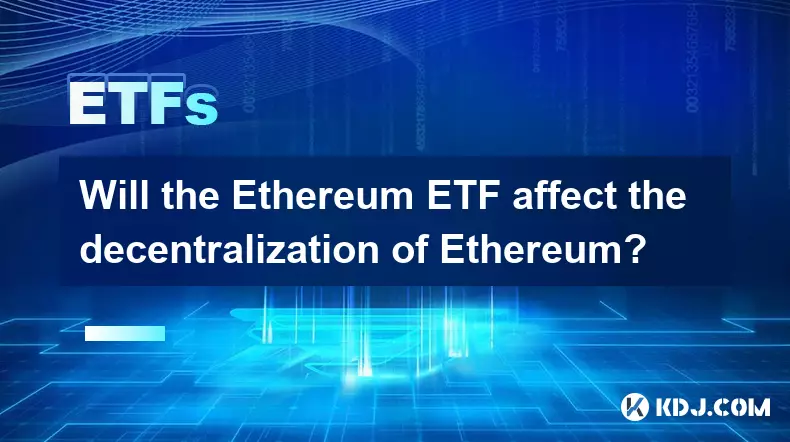
Will the Ethereum ETF affect the decentralization of Ethereum?
Sep 28,2025 at 04:37am
Understanding Ethereum ETFs and Their Structure1. An Ethereum ETF (Exchange-Traded Fund) is a financial product that tracks the price of Ethereum with...
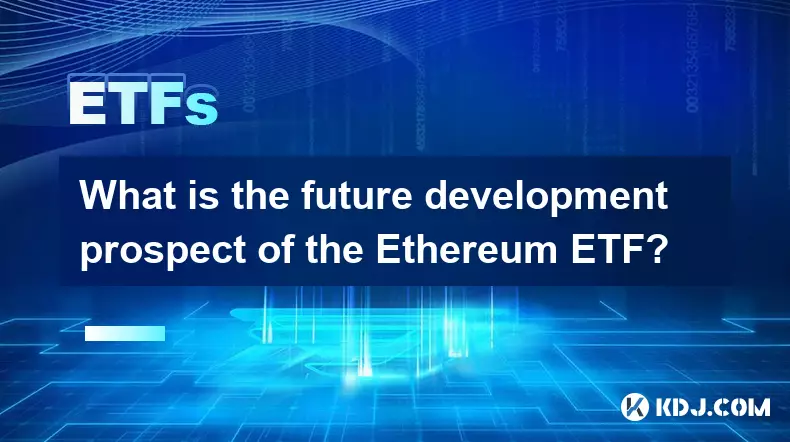
What is the future development prospect of the Ethereum ETF?
Sep 23,2025 at 01:36am
Ethereum ETF and Market Dynamics1. The introduction of an Ethereum ETF has sparked significant interest across the digital asset space. Institutional ...

Is the Ethereum ETF affected by Ethereum gas fees?
Sep 25,2025 at 12:18am
Ethereum ETFs and Their Structural Independence from Gas Fees1. Ethereum Exchange-Traded Funds (ETFs) are financial instruments designed to track the ...
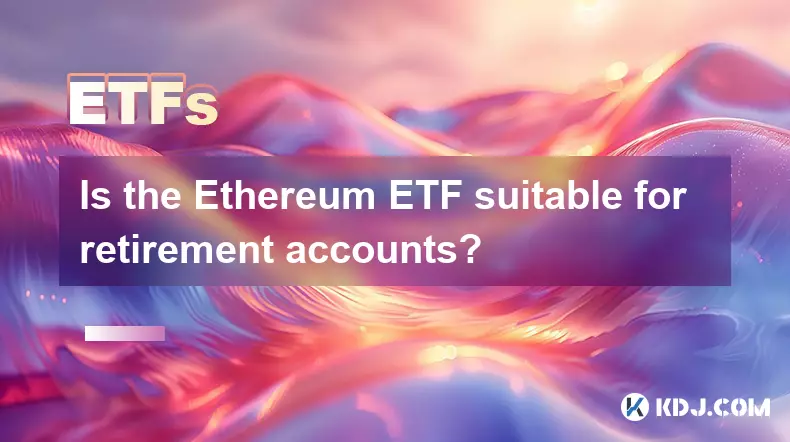
Is the Ethereum ETF suitable for retirement accounts?
Sep 29,2025 at 06:36am
Ethereum ETFs and Their Role in Retirement Planning1. Ethereum Exchange-Traded Funds (ETFs) have emerged as a bridge between traditional finance and d...
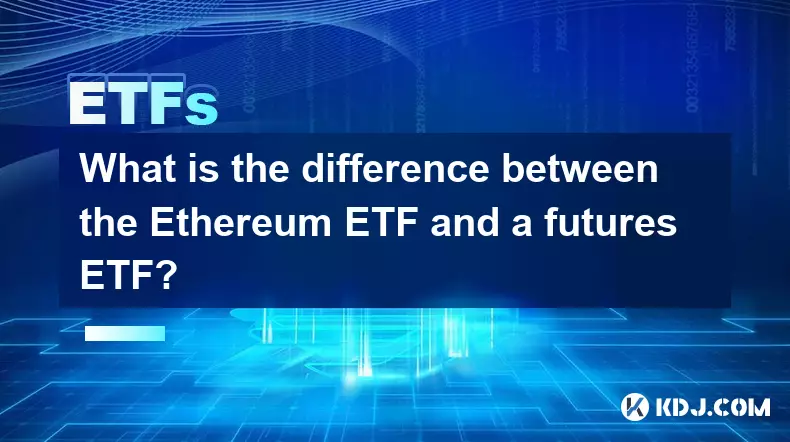
What is the difference between the Ethereum ETF and a futures ETF?
Sep 23,2025 at 06:18am
Bitcoin's Role in Decentralized Finance Evolution1. Bitcoin remains the cornerstone of decentralized finance, serving as a benchmark for value transfe...
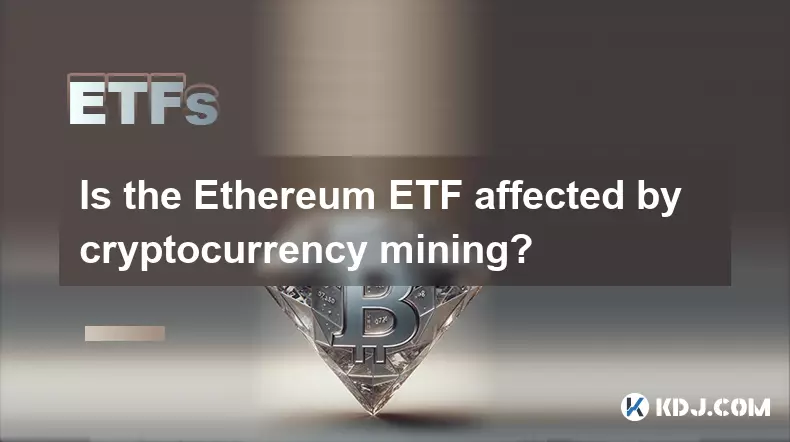
Is the Ethereum ETF affected by cryptocurrency mining?
Sep 23,2025 at 03:37pm
Understanding Ethereum ETFs and Their Market Drivers1. An Ethereum ETF (Exchange-Traded Fund) is a financial product that tracks the price of Ethereum...

Will the Ethereum ETF affect the decentralization of Ethereum?
Sep 28,2025 at 04:37am
Understanding Ethereum ETFs and Their Structure1. An Ethereum ETF (Exchange-Traded Fund) is a financial product that tracks the price of Ethereum with...

What is the future development prospect of the Ethereum ETF?
Sep 23,2025 at 01:36am
Ethereum ETF and Market Dynamics1. The introduction of an Ethereum ETF has sparked significant interest across the digital asset space. Institutional ...

Is the Ethereum ETF affected by Ethereum gas fees?
Sep 25,2025 at 12:18am
Ethereum ETFs and Their Structural Independence from Gas Fees1. Ethereum Exchange-Traded Funds (ETFs) are financial instruments designed to track the ...

Is the Ethereum ETF suitable for retirement accounts?
Sep 29,2025 at 06:36am
Ethereum ETFs and Their Role in Retirement Planning1. Ethereum Exchange-Traded Funds (ETFs) have emerged as a bridge between traditional finance and d...

What is the difference between the Ethereum ETF and a futures ETF?
Sep 23,2025 at 06:18am
Bitcoin's Role in Decentralized Finance Evolution1. Bitcoin remains the cornerstone of decentralized finance, serving as a benchmark for value transfe...

Is the Ethereum ETF affected by cryptocurrency mining?
Sep 23,2025 at 03:37pm
Understanding Ethereum ETFs and Their Market Drivers1. An Ethereum ETF (Exchange-Traded Fund) is a financial product that tracks the price of Ethereum...
See all articles










































































